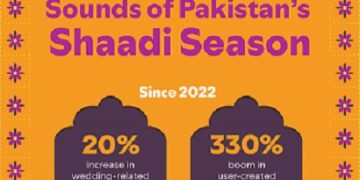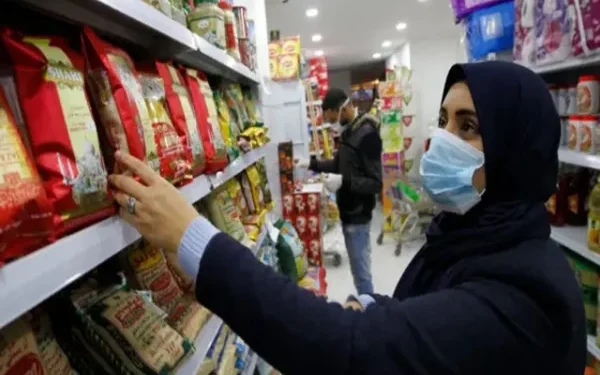ISLAMABAD – In a surprising economic development, Pakistan’s inflation rate for the fiscal year 2024–25 has significantly dropped to 4.49%, beating both the federal government’s target of 12% and the International Monetary Fund’s (IMF) earlier projection of 15%. This unexpected drop in inflation has been met with cautious optimism as it signals relief for consumers, yet highlights pressing concerns surrounding the country’s monetary policy and its broader impact on business activity and economic growth.
While the decline in inflation has brought temporary respite to consumers, economists warn that the State Bank of Pakistan’s (SBP) persistently high interest rate of 11% could potentially suffocate economic recovery by inflating government debt servicing costs and reducing competitiveness in the export sector.
A Closer Look at the Latest Inflation Figures
The latest monthly report from the Pakistan Bureau of Statistics (PBS) shows a remarkable slowdown in inflation. Average inflation during the 2024–25 fiscal year was 4.49%, a stark deviation from the government’s target of 12% and the IMF’s earlier estimate of 15%, which was later revised downward. Despite these projections, actual figures suggest that inflation has not only stabilized but has also returned to single digits, which was once considered improbable under prevailing fiscal conditions.
Inflation Snapshot – June 2025:
- National inflation rate: 3.23%
- Urban areas: 3.0%
- Rural areas: 3.58%
- Monthly inflation change (June vs. May): +0.23%
- Urban monthly increase: +0.08%
- Rural monthly increase: +0.47%
The Ministry of Finance’s forecast of inflation for June—between 3% and 4%—was validated by actual data, reinforcing the credibility of its short-term economic projections.
Key Price Trends: Mixed Signals in Commodity Markets
While headline inflation has dropped, the prices of several essential food commodities have shown an upward trend, raising concerns about cost-of-living pressures, especially for low- and middle-income households.
Items that saw price increases over the past year:
- Sugar: +25%
- Eggs: +25%
- Powdered milk: +22%
- Meat: +11%
A key contributor to the surge in sugar prices has been unregulated exports, which caused a local supply shortage. Additionally, the imposition of an 18% general sales tax (GST) on sugar has further exacerbated price hikes.
On the other hand, vegetable and energy prices have shown significant declines, which contributed to the lower overall inflation:
Items that saw price decreases over the past year:
- Onions: –56%
- Tomatoes and wheat: –17%
- Electricity rates: –30%
- Petrol: –2% (despite higher taxes)
The reduction in utility and fuel prices has helped offset rising food costs, providing some stability in household expenses. However, experts caution that global commodity market volatility could reverse these gains if supply chains are disrupted.
Interest Rates Remain a Major Concern
Despite the fall in inflation, the State Bank of Pakistan (SBP) has maintained a double-digit policy rate of 11%, which many economists argue is no longer justified. The gap between the current inflation rate (4.49%) and the interest rate (11%) stands at a massive 7.8%, prompting widespread criticism.
According to the independent think tank Economic Policy and Business Development, this policy is hurting the economy in multiple ways:
- Increasing cost of borrowing for businesses
- Stagnating industrial expansion
- Rising debt-servicing burden for the federal government
- Reduced competitiveness in regional exports
Rising Debt Servicing Costs: A Fiscal Crisis Brewing
The high interest rate has pushed Pakistan’s debt-servicing costs to unsustainable levels. In the 2024–25 federal budget, the government allocated a staggering Rs. 8,200 billion toward interest payments alone — nearly 46% of the total federal budget. If the interest rate remains at 11%, Pakistan is projected to spend Rs. 7,200 billion just on loan interest in the current fiscal year.
Proposed Interest Rate Cut: A Path Toward Fiscal Stability
Economists argue that reducing the interest rate to 6% would result in savings of approximately Rs. 3,000 billion for the federal government. These funds could be redirected toward:
- Job creation programs
- Infrastructure development
- Support for small and medium enterprises (SMEs)
- Social welfare initiatives
Bringing down the interest rate would also allow Pakistani exporters to compete more effectively with regional counterparts such as India, Bangladesh, and Vietnam, all of whom benefit from lower financing costs and better access to industrial credit.
Impact on Economic Growth and Business Climate
With such a large portion of the federal budget allocated to debt servicing, public sector development programs (PSDP) and other economic stimulus initiatives are likely to suffer. Businesses, especially small-scale enterprises, are struggling under the weight of expensive credit, which stifles innovation and discourages expansion.
High interest rates also deter foreign direct investment (FDI) and increase the cost of capital, resulting in sluggish GDP growth. Analysts warn that unless interest rates are aligned with inflation, Pakistan’s long-term growth potential will be severely compromised.
How Inflation Data Was Compiled
The Pakistan Bureau of Statistics collected inflation data by surveying prices of 356 consumer goods in 35 urban centers and 244 goods from 27 rural centers. This wide data set provides a comprehensive picture of consumption trends across the country.
Interestingly, food inflation in urban centers has decreased from 4.2% to 2.4%, suggesting that food prices in cities are stabilizing, although rural inflation remains slightly higher.
Looking Ahead: Policy Recommendations
To ensure that the benefits of low inflation translate into broader economic stability and growth, experts and stakeholders are urging the government to adopt the following strategies:
- Lower the SBP interest rate to 6% to match current inflation levels.
- Introduce stock and export monitoring mechanisms to prevent artificial shortages, particularly of sugar and other essential goods.
- Expand tax reforms to reduce reliance on consumption-based taxes that disproportionately affect the poor.
- Reinvest saved funds from debt servicing into health, education, and job-creating sectors.
- Improve supply chains and storage infrastructure to keep food inflation in check.
Conclusion: A Mixed Economic Outlook
While the sharp fall in inflation to 4.49% offers a glimmer of hope for the Pakistani economy, it is offset by the negative consequences of monetary tightening and excessive debt servicing costs. The State Bank’s interest rate policy, originally designed to tame inflation, now appears counterproductive in a low-inflation environment.
To capitalize on this window of opportunity, the government must pivot towards growth-oriented policies, support businesses, and rationalize interest rates. If managed wisely, the current economic indicators could mark the beginning of a more sustainable and inclusive economic recovery.

























